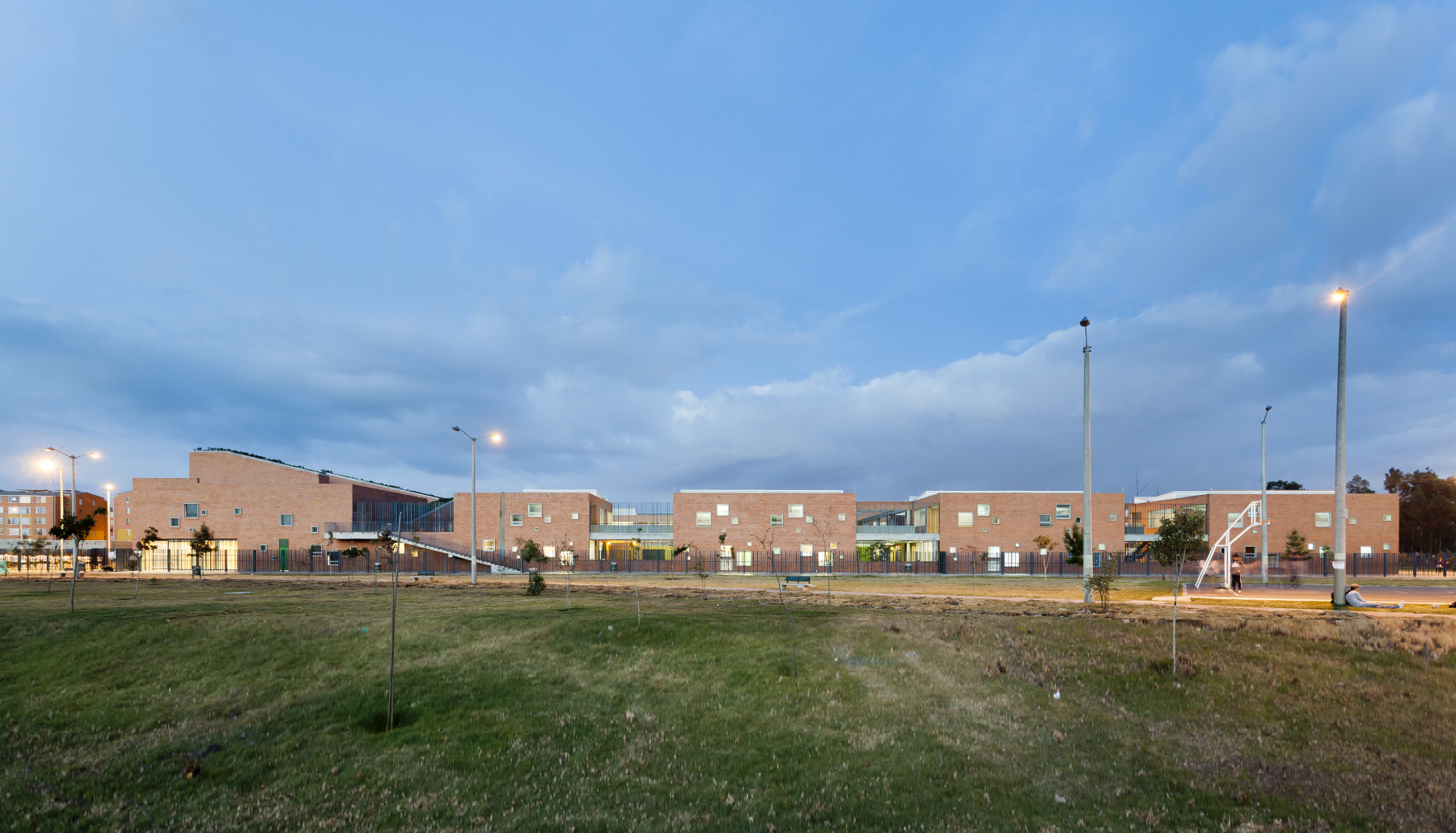









CIUDAD VERDE SCHOOL
Connecting Border, Sustainability Manager
Sustainability Pedagogy. The design for this school explores the possibility of converting a building into a social manager of sustainability issues, making these issues evident in the building in order to create awareness in the community regarding the proper management and conservation of energy and natural resources.
This school for 1440 students is proposed in direct contact with the large public park Logroño, with an approximate area of 30,000 m2, which the urbanization proposed as a green center around which the developments of equipment such as schools, kindergartens, and buildings for community recreation were located.
CONNECTIVITY WITH THE ENVIRONMENT. Valuing the importance of having such an environmentally and landscaped important area as a neighbor, the building proposes to explore the rupture or atomization of the volume as a strategy for achieving the spatial connection of the building with the exterior, generating porosities or voids that end up being small centers of attention around which the majority of activities revolve by sectors.
The voids or porosities are proposed as an intermediate layer between the interior and exterior of the building, this layer has the power to relate the internal pieces to each other and to the exterior; these spaces are also the point of connection with the large park on one side or the public street on the other.
Plazas of access connected to the adjacent park are proposed at the ends of the project; adjacent to these plazas, the large multipurpose hall and the library are proposed, which are clearly the most open chapters of the program to the community.
Adjacent to the multipurpose hall, at the second-floor level, an open terrace connected by a ramp to the 1st and 3rd floors is proposed, which makes it possible to connect the park with the proposed theater-terrace on the roof of the building.
In the classrooms, light is captured in two ways, through large floor-to-ceiling windows on one side that capture most of the light and open towards the proposed patios or porosities, and on the other side, a compositional game of openings of various sizes is proposed, creating an interesting texture that follows a pattern of perforation and allows for more controlled penetration of light.
At the second-floor level, a circuit route is proposed that links all the classroom circulation spaces, passing through the library and touching the terrace areas of the 2nd floor near the connections to the theater. The western building proposes the circulation of access to the classrooms on its exterior façade; in this way, some living areas or zones enter into frank visual connection with the park, turning them into a large live balcony with the presence of students in a recreational plan; this living wall proposes an open border that favors control and security over the park.
On the roof of the building, the farm and sustainable circuit are proposed, which presents stations or points where various sustainability and energy-saving topics can be appreciated, all aimed at transmitting awareness in this regard to sensitize families through the students and through them to the entire community.





